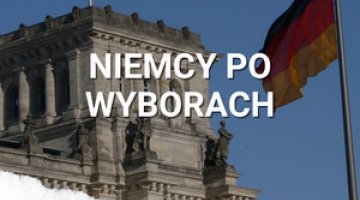Wins for SPD in Brandenburg and CDU in Saxony. AfD the strongest opposition party

On 1 September the elections to the state parliament of Brandenburg were won by the ruling Social Democrats (SPD), who got 26.2%, 5.7 percentage points less than in previous elections. Second place went to Alternative for Germany (AfD), gaining 23.5%, more than doubling their support (up 11.3 pp). Large losses were recorded by the CDU, who won 15.6% (down 7.4 pp), and the jointly-ruling Left (10.7%, down 7.9 pp). The Greens got 10.8% (up 4.6 pp), and the Free Voters also entered the parliament with 5% (up 2.3 pp). Turnout was 61.3% (up 13.4 pp).
In the elections to the state parliament in Saxony, the ruling CDU won with 32.1%, a loss of 7.3 percentage points. Again, second place went to the AfD, who enjoyed a great increase in support, gaining 27.5% (up 17.7 pp). Support for the Left fell sharply, to 10.4% of voters (down 8.5 pp). The Greens won 8.6% (up 2.9 percentage points), ahead of the co-ruling SPD, which got only 7.7% (down 4.7 pp). Turnout was 66.6% (up 17.5 pp).
Commentary
- The AfD’s record result in Saxony is the best of all the party’s results in any regional and federal election. The AfD will have 37 seats in Saxony (up 23) and 23 in Brandenburg (up 12), and will become the strongest opposition party in both Bundesländer. The group’s success is the result of both a much higher turnout (in both federal states the AfD mobilised over 361,000 people, mostly first-time voters) and their clear election campaign. One of its main themes was the accusation that Chancellor Angela Merkel had brought the country to a state of torpor similar to that prevailing in the German Democratic Republic (GDR) in its final period. The AfD also maintained that the increasing similarity of the political parties’ programmes means there is a lack of alternatives leading to a series of false choices, as in the GDR. The AfD also portrays itself as the sole defender of jobs in the traditionally strong coal sector. The party also denies that there is any significant human impact on climate change, or that it can be reversed.
- The AfD’s good result is also due to its charismatic leaders who belong to the radical ‘Flügel’ wing of the party: Andreas Kalbitz in Brandenburg, and Björn Hock in Thuringia. The latter was also heavily involved in the campaigns in Saxony and Brandenburg. Their success will strengthen the extreme factions of the party, and will increase their representation in the party’s federal executive, to which elections will be held in December this year.
- In the eastern federal states, unlike the west of the country, Alternative for Germany is a mass party like the CDU and the SPD. The AfD is gradually displacing the Left, which had previously been viewed as the party of East Germany, from the political scene. These regional elections are the latest of a series in which the Left has consistently lost support; it has now lost almost half its seats, going from 44 in 2014 to 24 at present. As recently as 2004 the post-communist PDS received 28% of the votes in Brandenburg and 23.6% in Saxony. In the voters’ opinion the AfD currently has the best take on the problems associated with the situation in eastern Germany. This is also confirmed by the change in voting patterns. While the CDU saw the biggest losses to the AfD, a significant part of the Left’s voters also went over to them. It also seems as if this trend will be confirmed in the longer term, as the party enjoys the most support among voters aged 18 to 59 in both Bundesländer.
- Nevertheless, Brandenburg and Saxony will still be governed by the parties which have done so since 1990 – the SPD and the CDU respectively – despite their weakest performances since German reunification. Thanks to the better-than-expected results, the states’ current premiers – Dietmar Woidke (SPD) in Brandenburg and Michael Kretschmer (CDU) in Saxony – will probably keep their jobs. In both federal states the parties will work to form ruling coalitions excluding the AfD. The price for achieving this will be three-party coalitions, which will thus be limited to the lowest common denominator in their programmes. This will strengthen the AfD in the next series of elections and increase voter disillusionment with the ruling parties. Both federal states will probably see the Green Party join the ruling coalitions. In Brandenburg, the SPD-Left coalition could be replaced by an SPD-CDU-Green or SPD-Green-Left arrangement. In Saxony, the Greens joining the current CDU-SPD coalition will be particularly controversial because some Christian Democrat activists will resist the Greens, as they find their programme too progressive. If the Christian Democrats cooperate with the Greens, there could be protests within the former party; the CDU could be weakened in the Saxony state parliament if individual CDU politicians switch to the AfD.
- The good result for the Greens stems both from the strong presence of environmental issues in the public debate and the persistent high level of support for the Greens in federal politics, as well as the weaknesses of the CDU and the SPD. The Greens, who hitherto had been teetering on the brink of the electoral threshold, now have a chance to participate in government for the first time in the history of the two states. The party has also been strengthened by its diametric opposition to the AfD, which increases the involvement of both voters and activists. The success of both the Greens and the AfD is also due to individual local circumstances. The AfD is stronger in regions with weaker potential for economic growth and greater emigration; in turn, the Greens receive greater support in districts with younger populations and a more stable economy.
- The SPD and CDU’s continued hold on power will weaken the radical demands of the social-democratic activists, who have called for the rapid break-up of the ruling grand coalition in Germany. The debate on the federal government’s future has been postponed at least until the next regional elections, which will take place in Thuringia (27 October). The CDU’s victory in Saxony has dialled back the criticism of the CDU’s new leader Annegret Kramp-Karrenbauer, centred around her unfortunate statements during the election campaign and her focus on the liberal electorate, which was intended to stop CDU voters from defecting to the Green Party. Some CDU activists have also accused Kramp-Karrenbauer of being too categorical in rejecting the possibility of cooperating with the AfD (for example, by forming a minority government in Saxony with the AfD’s support).




